Every household has its treasures.

Schoolbooks, clippings, old bills, cards and letters tell the stories of individuals and families. Personal papers and images are symbols of who we are.
BUT
Which of them should we keep?
Which items fill in the details? And which don’t add to your story at all?
What would a researcher choose to tell your life story?
Last month, Family Archivist, Rosalba Finnerty began her series about archiving your life story and thank you also to the readers who are adding additional tips.
Rosalba advised us to start simply by separating items broadly into categories.
Photo albums and loose photos were first.
She continues her archiving tips.
Digital photos
My husband is a prodigious photographer and puts them on a remote hard drive. I encourage him to apply the criteria below (especially the duplication one) as well as adding the name and date as he files them by subject.
Those questions again:
- Do you know all the people in the photo?
- Do you need to keep duplicates (or very similar photos)?
- Is the photo in good condition?
- Is the photo of an important occasion?
Slides
Here’s your opportunity to hold a private slide evening so that you can decide what you want/need to keep. Have a reject bucket handy!
Those you decide to keep can be scanned and kept digitally.
(Or stored in suitable packets so that you can still view them).
Papers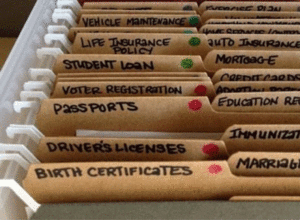
These can be a challenge. Make sure your current important documents are kept separate and clearly labelled.
Sort all of your other accumulated papers into piles and put the ones you want to keep into labelled envelopes (new ones) and write brief descriptions on the outside. Only save things that are important in your life story. It is amazing how much you will feel you don’t need anymore!
Tips: You might want to do this in a space that you can leave undisturbed. Sorting a lot of papers takes time and it is a nuisance to have to pack everything up so that you can use the dining table!.
Diaries
Look through these carefully before deciding what is best to be done with those you find. If you plan on keeping them, wrap each one in acid-free tissue and place them in an acid-free box.
We have diaries, beautifully illustrated from my grandfather and grandmother (1900s). 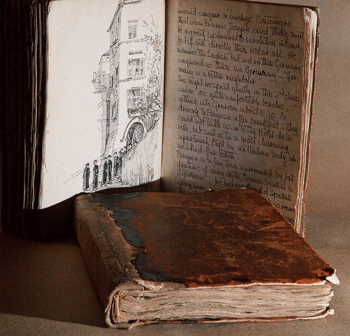
We have scanned all of these so that all the grandchildren have copies. The originals will go back to museums in England. We have done a similar thing with one of the travel diaries of my late sister – but the original will stay with her children.
“Old letters and diaries give you a sense of the people. They show you what they valued. What they did, what they ate, what holidays they celebrated. Letters provide a voice and by grouping them together you release a kind of narrative.” Laura Kells, Library of Congress
Next month Rosalba will conclude her series by sharing tips and ideas for creating digital records – and other practical techniques she has learned along the way.
Have fun!
 Rosalba Finnerty, Family Archivist.
Rosalba Finnerty, Family Archivist.
Do you have some questions for Rosalba or tips you would like to share? Please leave us a comment below.

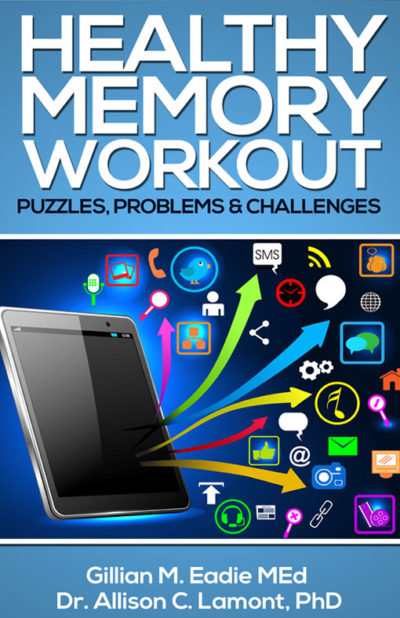

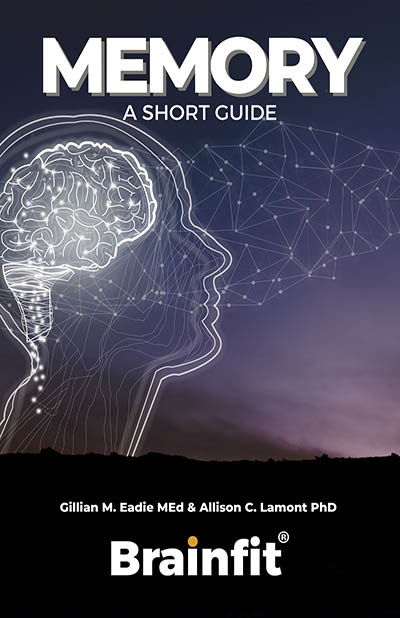
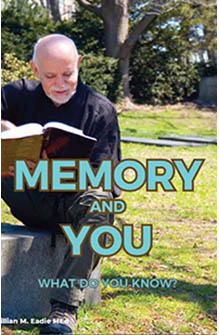
I have a lot of letters. What is the best way to save them? In the envelopes ortaken out and unfolded?
Rosemary
This is so helpful thanks! Just wondering if Part 1 is still available as I have only recently become involved with the Memory Foundation.
Hello there
Here is the link to Part 1 – I hope you find this one really helpful, too! https://www.brainfit.world/2017/05/18/archive-1/. Have fun with your treasures!
Good afternoon Janet,
I was at a little school archives workshop the other weekend and folded paper became a topic of discussion. In the perfect world unfolded and stored in flat envelopes (acid free or esselte ones)… BUT as you are no doubt aware paper can be brittle and unfolding it can cause more harm than good, so if in doubt don’t unfold. In the past I have removed staples, pins and sellotape and laid letters (and other folded papers) out in a nice clear space (where they will not be in the way), and allowed them to relax and then filed them chronologically. Envelopes can be interesting too when it comes to stamps, postmarks and destinations, so may be worth keeping, but with out the letters in them. In the case of both letters and envelopes, apply the criteria as whether to keep or not to keep.
Good Luck